#bodypositivity hashtag
Explore tagged Tumblr posts
Text









Medical Logo and Brand Identity Design
► Check Complete Branding Design: https://www.behance.net/gallery/200964191/Dentalcare-Branding-Design-Medical-Corporate-Identity
#medical hashtag#healthylife hashtag#healthcare hashtag#wellness hashtag#clinic hashtag#hospital hashtag#dental hashtag#dentalcare hashtag#bodypositivity hashtag#wellnessjourney hashtag#mother hashtag#baby hashtag#medicine hashtag#treatment hashtag#Parenting hashtag#healthcoach hashtag#maternity hashtag#breastfeeding hashtag#Nursing hashtag#nutrition hashtag#nutritionist hashtag#mothernature hashtag#childcare hashtag#bodycare hashtag#logo hashtag#logodesigner hashtag#graphicdesign hashtag#graphicdesigner hashtag#branding hashtag#brandingdesign hashtag
0 notes
Text
[Week 3: Feminism on Tumblr? r/laughable]
Does the #bodypositivity trend still active? Or does society has deemed it toxic and no longer elaborate? Let's find out.
Throughout the history of online social media, one of the significant trend rises for women is the #bodypositivity trend, with the intention of promoting self-love, authenticity and confidence in expressing themselves in any type of body, races, nationalities,... unregards to the traditional "beauty standard" of how a female's body should be.

Started at the late 2010s (Tonic, 2019), the trend attracted countless of teens, women, female, LGBTQ+ to participate, displaying their selves without fear of judgement.
Tumblr, naturally with its guidelines and platform vernacular, quickly became a place for this trend to thrive! (McKelle, 2015).
But of course, challenges appeared
As shown in the experimental article:
“Love the Skin You‘re In” (Reif et al., 2022)
The characteristics of this trend include females uploading their selfies on the social platforms, more often with revealing lots of skins and body parts that considered 'unfit' for the beauty standard in that time, and hoped for appreciations, fame and so on (Reif et al., 2022).
These characteristics were later marked as NSFW content and was taken down by Tumblr due to the platforms guidelines and rules adjustment in 2018. This change of Tumblr severely affect the trend, and many users no longer view Tumblr as a "safe place" to be active, thus lead to many frustration and disappointment from the users' side (Ashley, 2018)

The Downside of #bodypositivity
Apart from being challenged by social media platforms' rules and guidelines about which content can be post and view, many of the female's pictures posted with the hashtag #bodypositivity are still visibly trying as best as they can to fit the "beauty standard" by multiple edits and posing before uploading, inevitably ignored the original purpose of the trend, turning the trend into a "race for popularity" and "appeal to the male's gaze", as shown in the experimental article above.
Moreover, many female users have been "slut-shame" and "ridiculed" by the male community, further discourage new users to participate in the trend as well as the old users, contemplating whether or not they should continue to speak up.

What Happened After?
With all that fuss building up, people have started to mock the trend, specifically the users and Tumblr, and preferred the participants as "Tumblr Feminists" and completely mixed up and doxing people into believing that "Feminism" is corrupted while having little to none knowledge of what the word actually means (Keller, 2021).
"Oh, you're a Feminist? People like you are the cause of equal gender rights!"
Moreover, on the commercial side, many unethical organizations took advantage of this trend and its drama to advertise "Unlicensed Supplements" that helped to achieved a "Dream Body", and bribing celebrities and influencers to promote these product disregarding the harm it actually does to our Bodies, all about the money!
"If this celebrity use this, then I shall too cause' they're my idol and I'll do anything my idol said"

It quickly became a social threat, for the effects of these drugs do to the body are very harmful and many ignorant users have suffered (FDA, 2024). People then associate this public threat as a byproduct of the #bodypositivity trend and the celebrities within it, thus viewed it as "Toxic" and "Inappropriate" and must be shut down (Swami, 2022).
So, Did The Trend Die Out Completely?
Surprisingly, no.
Throughout the decade, people have started to have online precautions (yay), and suitable regulations have been implemented in an effort to allow people to do anything they want within the range of acceptability and safety, thus steering the trend to a more positive and mindful path!

Then, How Can You Effectively Join The Trend?
Be mindful and respectful towards any content, or specifically any body type, when surfing the internet, only participate in an online argument when you have gathered all the insights from every side of the story.
Related to the #bodypositivity trend directly, one of the ways to help you to feel confidence and appreciate your body more is to listen to music! Especially the self-love, self-appreciation songs, since base on research, music affects human's mental greatly, and positive influence can be achieved easily with the right song~ (Coyne et al., 2020)
youtube
Also, join hands to create a friendly community and a safe place for this trend to resurface again is also a great idea that require minimal efforts!
In Conclusion, This Is What You Should Do:
Have some basic mindset when using social media
Be respectful to everyone and mindful of anything
Create a safe and appropriate online environment
Be your most authentic self
Thank you for reading this, have a nice day~
4 notes
·
View notes
Text
Is there any place on the internet that fits the definition of an ideal public sphere? A nerdy discussion about Tumblr and its connection to digital activism.
"Gosh.."

Considering how much time we have invested in the internet today, it is hard to say if we have had a pleasant experience dealing with things that violate our rights, even if they do not violate or negatively impact others. We all need some place to raise our voices freely without any hindrance, and that may make us think about... Tumblr!
Tumblr has functioned as a digital public sphere where users engage in discussions on social issues, particularly feminism and body positivity. Hashtags like #bodypositive, #effyourbeautystandards, and #beautybeyondsize have created spaces where individuals can resist fat stigma and redefine beauty ideals.
"Wait, what is a public sphere?"

A public sphere, well, is a space where individuals gather as public to engage in rational discussion aimed at enhancing critical knowledge, which then becomes political change.
To determine if something is an ideal public sphere, it has to include unlimited access to information, equal and protected participation, and the absence of institutional influence (Kruse et al., 2018).
Currently, most digital social media platforms only meet half of these requirements or even fewer. However, Tumblr stands out as having a strong resemblance in this regard!
"Tumblr, an ideal place to express yourself!"
Tumblr allows the user to be pseudonymous with usernames, and less date & time monitoring that effectively reduces institutional influence. Users also can control the content and the flow of followers of their blogs (McCracken, 2017). Thanks to that, many marginalized groups (Feminists, LGBTQ+, Indigenous peoples, etc.) can freely post their ideas while being protected. With Tumblr's implemented hashtag function (they are the first ones to do that!), their post can be seen widely and even publicly without the need for the intended audience to follow the author.
Furthermore, Tumblr works both as a blogging site and a social media platform to help user have extensive space and creative ways to express themselves and give context throughout their post.
This close fit of Tumblr as a public sphere makes it a standout choice for activists to participate in.
"Voice within a community can be heard!"
Take a break and look at these beautiful illustrations (by anahitacreates)
Hashtag activism, often associated with feminism, has allowed Tumblr users to form virtual communities advocating for gender equality and inclusivity. These online spaces provide solidarity across class, race, and sexuality while offering a refuge from mainstream media's restrictive beauty norms.
The #bodypositive digital feminist movement, for example, is mostly led by women and emphasizes body positivity, self-acceptance, and fitness. Researchers discovered that it offers a supportive and encouraging environment where people can express themselves and discuss their journeys towards self-love (Reif et al., 2022). While sexualization and conventional self-presentation still exist within the community, making the mindset in #bodypositive difficult for many to achieve, the movement itself confirms that Tumblr provides a perfect place for communities to raise their voice confidently and create impact.
References:
Kruse, L. M., Norris, D. R., & Flinchum, J. R. (2018). Social Media as a Public Sphere? Politics on Social Media. The Sociological Quarterly, 59(1), 62–84. https://doi.org/10.1080/00380253.2017.1383143
McCracken, A. (2017). Tumblr Youth Subcultures and Media Engagement. Cinema Journal, 57(1), 151–161. https://www.jstor.org/stable/44867867
Reif, A., Miller, I., & Taddicken, M. (2022). “Love the Skin You‘re In”: An Analysis of Women’s Self-Presentation and User Reactions to Selfies Using the Tumblr Hashtag #bodypositive. Mass Communication and Society, 26(6), 4–18. https://doi.org/10.1080/15205436.2022.2138442
2 notes
·
View notes
Text
[3]Can Social Media Ever Be Truly Free?
“Hashtags such as #bodypositive are key sites of self-representation, but they also reveal persistent beauty hierarchies.” – Reif et al. (2022)
Social media has changed the way people engage with activism, giving marginalized groups a space to express themselves. Tumblr has been a key platform for movements like #BodyPositive, allowing users to challenge traditional beauty standards and promote self-love. However, as Reif et al. (2022) discuss, even within these movements, certain beauty norms persist, with white, conventionally attractive individuals receiving more visibility than others. This raises a crucial issue—while social media enables activism, it also reinforces existing power structures.
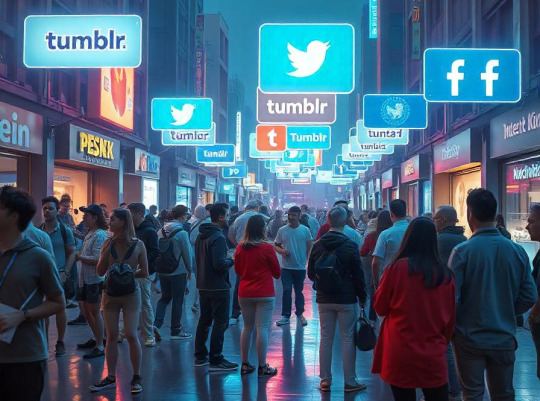
The Limitations of Social Media as a Public Sphere
The public sphere, as defined by Habermas, is meant to be a space where individuals can freely exchange ideas, shaping public opinion and democracy. In theory, social media offers this space, but in practice, it is shaped by corporate interests, algorithms, and moderation policies. Platforms like Tumblr do allow users to create micro-publics, where niche communities can thrive, but they still operate within corporate-controlled environments. Pilipets (2022) highlights how Tumblr’s 2018 NSFW ban disproportionately impacted feminist and LGBTQ+ communities, removing large portions of body-positive and queer content while failing to address other problematic material. This shows how corporate policies shape digital activism, often prioritizing advertiser-friendly content over authentic self-expression.

How Tumblr’s Platform Vernacular Shapes Activism
Tumblr’s reblogging culture and visual-based discourse make activism more accessible, allowing messages to spread quickly. However, Keller (2019) argues that this can also lead to performative activism, where engagement is passive rather than action-driven. Unlike platforms where users engage in real-time discussions, Tumblr’s activism often revolves around sharing aesthetically appealing content, which may dilute the complexity of social issues. Reif et al. (2022) found that while #BodyPositive posts aim to challenge beauty norms, they often still favor certain body types, particularly those considered “curvy but acceptable.” This highlights how platform structures influence activism, shaping which narratives gain traction.

The Role of Anonymity in Digital Activism
One of Tumblr’s most distinctive features is its anonymity, which allows users to engage without tying their activism to their real-world identities. This can be empowering, particularly for individuals in marginalized communities, who may not feel safe expressing themselves openly on platforms like Facebook. However, anonymity also has drawbacks. Pilipets (2022) notes that it can enable trolling, misinformation, and harassment, making it harder to maintain constructive activism. Additionally, anonymity can limit the effectiveness of activism beyond the digital space, as movements without identifiable leaders may struggle to organize real-world action.

The Influence of Algorithms on Online Activism
Algorithms determine what users see, shaping both perception and participation in online movements. On Tumblr, algorithmic moderation often mislabels body-positive images as explicit content, reinforcing biases in content visibility (Pilipets, 2022). Additionally, algorithms contribute to filter bubbles, where users are repeatedly exposed to similar content, limiting the diversity of perspectives (Keller, 2019). This impacts activism, as movements can become self-contained, reaching only those who already support them while failing to challenge wider societal norms.

References:
Keller, J. (2019). “Oh, She’s a Tumblr Feminist”: Exploring the Platform Vernacular of Girls’ Social Media Feminisms. Social Media + Society, 5(3).
Pilipets, E. (2022). Nipples, Memes, and Algorithmic Failure: NSFW Critique of Tumblr Censorship. New Media & Society, 24(6), 1459–1480.
Reif, A., Miller, I., & Taddicken, M. (2022). Love the Skin You’re In: An Analysis of Women’s Self-Presentation and User Reactions to Selfies Using the Tumblr Hashtag #bodypositive. Mass Communication & Society.
2 notes
·
View notes
Text
🌿 The #BodyPositive Movement on Tumblr: A Free Space or Still Limited?
MDA20009 Digital Communities
On Tumblr, #BodyPositive is more than just a hashtag—it is a community where people challenge traditional beauty standards, seek self-acceptance, and spread messages of body love. While this movement has helped many individuals gain confidence, it still faces certain limitations.
📖 The Origin and Development of #BodyPositive
The #BodyPositive movement did not emerge randomly; it originated from the Fat Acceptance Movement in the late 1960s in the U.S. (Body Positivity, 2022), a time when Western beauty standards favored thinness and marginalized larger bodies.

With the rise of social media, the movement expanded rapidly, particularly on Tumblr—a platform known for its anonymity and engagement-driven features like hashtags and reblogging (Osborn, 2022). Here, a #BodyPositive post can easily be shared across different communities, such as #transisbeautiful (supporting transgender individuals) or #mentalhealthawareness, broadening awareness of body diversity.
🔍 Tumblr’s Role in the #BodyPositive Movement
Tumblr plays a significant role in the #BodyPositive movement, offering an open space for sharing and promoting self-acceptance. However, it still struggles against deep-rooted societal biases.

Key factors include:
✔️ Anonymity, allowing users to share body images without fear of judgment.
✔️ Reblogging mechanisms, facilitating the spread of #BodyPositive messages across communities.
✔️ An open environment where marginalized groups can find support and solidarity.
Most comments on #BodyPositive posts are encouraging and supportive, reflecting Tumblr’s role as a space for social critique and personal storytelling.



Blog’s link: https://www.tumblr.com/perel/712327847937703936/check-out-my-body?source=share
However, research suggests that some content remains sexualized. Instead of focusing on self-acceptance, certain comments primarily evaluate women's appearances, highlighting the persistent societal bias within the movement.


⚖️ Is Tumblr Truly a Public Sphere?
Although Tumblr fosters a space for the #BodyPositive movement, it falls short of being a true public sphere, as described by Jürgen Habermas. According to his theory, an ideal public sphere is a space where individuals can discuss social issues freely and equally. However, social media does not fully align with this concept. A study on digital media suggests:

Similar limitations apply to the #BodyPositive movement on Tumblr: algorithmic restrictions and content moderation can reduce diversity, users often interact within echo chambers, and the movement continues to emphasize physical appearance rather than fundamentally shifting perspectives on body image.
⚖️ The Lack of Diversity in #BodyPositive
Although the #BodyPositive movement aims for inclusivity, studies reveal certain limitations. A study analyzing 300 images in the #BodyPositive movement found:
82.3% featured white women, → reflecting a lack of racial diversity.
50% included makeup, → suggesting that natural beauty is not fully embraced.
Only 17% showcased 'imperfections' such as scars, stretch marks, or acne (Griffin et al., 2022).
Rather than completely dismantling beauty norms, the movement sometimes expands existing standards—making them more flexible but not entirely transforming them.

🎭 When the Movement Still Focuses on Appearance
While #BodyPositive broadens the definition of beauty, it continues to focus on physical appearance (West, 2022). Research by Cohen et al. (2020) found:
32% of images featured revealing or highly revealing clothing.
34% contained elements of body objectification.
Additionally, on other platforms like Instagram, the majority of people who openly share their journey of body acceptance are still white, heterosexual, young, and have body types that align with conventional beauty standards (Griffin et al., 2022)
instagram
This has led many to question whether the movement genuinely helps everyone feel accepted or if it still operates within certain limitations.
🚨 Tumblr’s 2018 Content Moderation Policy and Its Impact on #BodyPositive
In 2018, Tumblr implemented a content moderation policy banning NSFW (Not Safe for Work) content, significantly impacting the #BodyPositive movement. The policy aimed to reduce child exploitation and extremist content (Sands, n.d.), but it also restricted body-positive content.
According to Habermas’s public sphere theory, Tumblr was considered an open space where individuals could discuss freely. However, the 2018 policy reduced this freedom, leading to:
❌ The removal of many body-related and sex-positive posts.
❌ A decline in diversity within the #BodyPositive movement.
❌ A migration of users to other platforms with stricter commercialized algorithms (Sands, n.d.).
As a result, while the policy aimed to regulate harmful content, it inadvertently restricted self-expression within the #BodyPositive community, limiting diversity and reducing Tumblr’s role as an open and inclusive space for body acceptance.
🔮 Conclusion
Tumblr has been a crucial platform for the growth of the #BodyPositive movement, fostering a space for self-expression and community building. However, research shows that even in an open environment, traditional beauty standards still exert a strong influence.
To achieve the movement’s true objectives, further steps are necessary:
✔️ Enhancing content diversity, especially by encouraging participation from underrepresented groups.
✔️ Shifting from Body Positivity to Body Neutrality, recognizing bodies as natural aspects of human existence rather than assigning value based on appearance.
✔️ Improving Tumblr’s algorithms, ensuring fair visibility of non-commercialized or less conventional body-positive content.
Ultimately, Tumblr must continue to serve as an open platform where the #BodyPositive movement can thrive—not just as a fleeting trend but as a meaningful shift in how society perceives bodies and self-worth.
References
Body positivity. (2022). Psychology Today. https://www.psychologytoday.com/intl/basics/body-positivity
Cohen, R., Newton-John, T., & Slater, A. (2020). The case for body positivity on social media: Perspectives on current advances and future directions. Journal of Health Psychology, 26(13), 2365–2373. https://doi.org/10.1177/1359105320912450
Griffin, M., Bailey, K. A., & Lopez, K. J. (2022). #BodyPositive? A critical exploration of the body positive movement within physical cultures taking an intersectionality approach. Frontiers in Sports and Active Living, 4(908580). https://doi.org/10.3389/fspor.2022.908580
Kruse, L. M., Norris, D. R., & Flinchum, J. R. (2018). Social media as a public sphere? Politics on social media. The Sociological Quarterly, 59(1), 62–84. https://doi.org/10.1080/00380253.2017.1383143
Osborn, T. (2022). From New York to Instagram: The history of the body positivity movement. BBC Bitesize. https://www.bbc.co.uk/bitesize/articles/z2w7dp3
Sands, M. (n.d.). Tumblocalypse: Where tumblr and its users are headed after the ban. Forbes. https://www.forbes.com/sites/masonsands/2018/12/20/tumblocalypse-where-tumblr-and-its-users-are-headed-after-the-ban/
West, M. (2022, April 29). Body positivity movement: Benefits, drawbacks, vs. body neutrality. Www.medicalnewstoday.com. https://www.medicalnewstoday.com/articles/body-positivity#in-popular-culture
2 notes
·
View notes
Text
From Hashtag to Revolution: Tumblr and the Feminist Struggle
In the digital age, social media has become an important space for feminist discourse, where hashtag-based movements thrive. According to Habermas’s theory of public space (cited in Kruse, Norris & Flinchum 2018, pp. 62-63), an ideal public space should ensure access to information, equal participation, and freedom from institutional domination. In this context, Tumblr has emerged as a unique platform where feminist communities can connect, share, and raise awareness about gender equality. So is Tumblr an ideal public space for feminists?

Tumblr and the Digital Public Sphere
Founded in 2007, Tumblr is different from other social media platforms due to its anonymity, robust hashtag system, and reblog mechanism. This creates an open space where users can discuss sensitive issues without fear of censorship or harassment. According to Kruse et al. (2018), a true public sphere must meet three criteria:
1. Unrestricted access to information - On Tumblr, users can find a wide range of political, gender, and feminist material and discussions without being constrained by algorithms like on Facebook or Instagram.
2. Equal participation - Unlike Twitter, where posts are easily hijacked, Tumblr allows users to control what appears on their personal pages.
3. Reduced institutional control - Tumblr is less controlled by corporations or governments than other platforms.
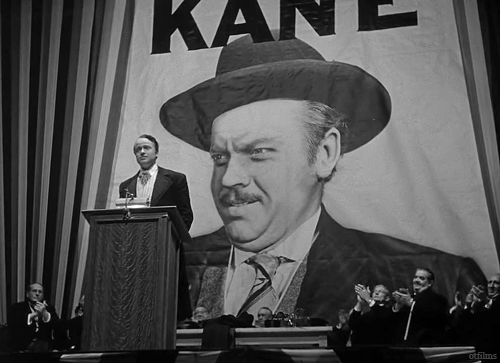
Feminism on Tumblr
Tumblr is considered the center of the digital feminist movement. Keller (2019) claimed that “Feminism on Tumblr” describes how feminist groups on the platform use social media to fight for women’s rights, share personal experiences, and create spaces for mutual support. Hashtags like #Feminism, #MeToo, and #BodyPositive have attracted millions of posts, raising awareness about gender inequality. On Tumblr, users are free to express their feminist views in creative and powerful ways. The platform is not limited to traditional forms of feminism, but also opens up space to explore new, even revolutionary approaches, allowing people to share and express their identities.
In addition, Tumblr has played a significant role in spreading discussions about LGBTQ+ rights, gender-based violence, and societal beauty standards. According to Solomon & Kurtz-Costes (2017), as social media platforms represent hubs of community for transgender adolescents, these communities provide emotional, appraisal, and informational support that transgender youth may not otherwise be able to access. In particular, the platform has become an important space for trans women, where they can find empathy, and support, and share their experiences in their journey to self-actualization. Thanks to Tumblr’s anonymity and unique language culture, many trans women have found a community where they can be their true selves, fight for their rights, and express their identities without fear of judgment or discrimination.

Despite the presence of other social media platforms, Tumblr stands out as an important space for building and promoting feminist movements. With its anonymity and unique language culture, Tumblr continues to be a place where communities can connect, share, and express their identities freely and powerfully. Tumblr’s future in this role will depend on how the platform adapts and evolves in the rapidly changing digital landscape.
What do you think about Tumblr’s ability to continue to be an important space for social movements? Share your thoughts! 🚀
References
Keller, J. (2019). “Oh, She’s a Tumblr Feminist”: Exploring the Platform Vernacular of Girls’ Social Media Feminisms. Social Media + Society, 5(3), 1–11. https://doi.org/10.1177/2056305119867442
Kruse, L. M., Norris, D. R., & Flinchum, J. R. (2018). Social Media as a Public Sphere? Politics on Social Media. The Sociological Quarterly, 59(1), 62–84. https://doi.org/10.1080/00380253.2017.1383143
Solomon, H. E., & Kurtz-Costes, B. (2017). Media’s Influence on Perceptions of Trans Women. Sexuality Research and Social Policy, 15(1), 34–47. https://doi.org/10.1007/s13178-017-0280-2
2 notes
·
View notes
Text
Tumblr: A Platform for Underrepresented Communities

Tumblr has now carved out a niche within the larger context, becoming a kind of “public space” for people who want to express themselves strongly but do not want to be judged and harassed. Public space, as Habermas describes it, is a space where people gather to exchange ideas and engage in political discussions (Kruse 2018). Popular social media platforms such as Facebook and Instagram have a wide audience, but they have a weakness in that they are public, which leads to criticism and vilification. In contrast, Tumblr encourages users with similar interests to connect without interference from other parties. Another strength is that Tumblr allows for anonymity and creative freedom.
Tumblr began in 2007 and was the first social media site to shelter underrepresented communities such as LGBTQIA+ groups, feminists, and people of color (Keller 2019). In return, the platform afforded them anonymity, hashtagging, and reduced surveillance, creating a comfortable space where users could criticize political and social criticism. More recently, Tumblr has become a haven for feminist movements, reintroducing body positivity to #bodypositivity by allowing users to reclaim their bodies from social stigma (Griffin et al., 2022).

Tumblr also stands out when it comes to the creativity it offers, how users innovate the site and language to fit their expressive lifestyles (Keller 2019). The ability to reshare and create GIFs has allowed ideas to flow more naturally, creating aesthetic and activist communities and personalizing accounts. While some younger users have left Tumblr following the 2018 NSFW ban, its core user base remains extremely strong, providing a space that is well protected from economic and political pressures within smaller communities (Bruns & Highfield, 2023).
Tumblr will continue to evolve, and the platform will remain an important “public space” for underrepresented people and enable them to discuss social and political issues.
References
Bruns, A., & Highfield, T. (2015). Is Habermas on Twitter? The Routledge Companion to Social Media and Politics, 56–73. https://doi.org/10.4324/9781315716299-5
Griffin, M., Bailey, K. A., & Lopez, K. J. (2022). #BodyPositive? A critical exploration of the body positive movement within physical cultures taking an intersectionality approach. Frontiers in Sports and Active Living, 4(908580). https://doi.org/10.3389/fspor.2022.908580
Keller, J. (2019). “Oh, She’s a Tumblr Feminist”: Exploring the Platform Vernacular of Girls’ Social Media Feminisms. Social Media + Society, 5(3), 1–11. https://doi.org/10.1177/2056305119867442
Kruse, L. M., Norris, D. R., & Flinchum, J. R. (2017). Social Media as a Public Sphere? Politics on Social Media. The Sociological Quarterly, 59(1), 62–84. https://doi.org/10.1080/00380253.2017.1383143
2 notes
·
View notes
Text
"Love the Skin You're In": A Dive into #BodyPositive on Tumblr
In a society filled with unattainable beauty standards and polished perfection, the body positivity movement serves as a light of hope, challenging conventions while appreciating differences. But where can this movement actually thrive? This blog will explore the colorful weave of body positivity on Tumblr, a digital safety where people come together under the hashtag #bodypositive to redefine beauty on their own terms.
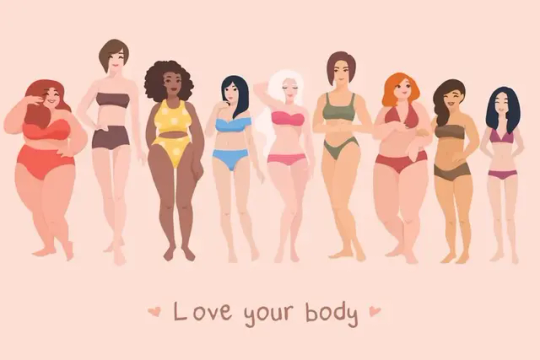
A Digital Revolution of Self-Love
The internet environment provides powerful feminist spaces through hashtags, boosting confidence and challenging conventional beauty norms. #Bodypositive epitomizes this trend, which promotes self-empowerment and rejects limited beauty standards (Reif, Miller & Taddicken 2022). However, worries remain about self-objectification and sexualization in selfie culture.
Inspiring Diversity: Self-Presentation on Tumblr
In the colorful tapestry of Tumblr, the #bodypositive hashtag serves as a beacon of inclusivity and self-expression (Gibson 2017). Here, individuals of all backgrounds and identities converge to challenge societal norms and celebrate the beauty of diversity.

This movement, which gained momentum as early as 2012, has become a cornerstone of digital activism, fostering acceptance, empowerment, and a sense of belonging within the so-called Fatosphere (Meleo-Erwin 2011). By sharing their stories and selfies under hashtags like #effyourbeautystandards and #beautybeyondsize, users resist the fat stigma, promoting acceptance and reframing societal constructs of beauty and body image. It's a digital revolution fueled by authenticity and solidarity, where every post is a testament to the power of self-love and collective action (Afful & Ricciardelli 2015).
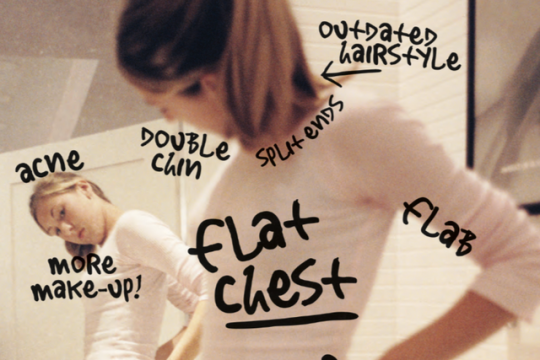
However, despite its progressive aims, the body-positive movement is not without criticism. Engagement with body-related hashtags may unintentionally prolong self-objectification and encourage postfeminist ideas about self-improvement via looks (Sastre 2014). Furthermore, the depiction in these hashtags frequently favors normative and conventionally beautiful bodies, excluding people who do not meet these restricted criteria.
2. Exploring Community Dynamics: Reactions and Engagement
In Tumblr's thriving digital environment, the #bodypositive movement generates conversations, promotes connections, and inspires change (Caso et al. 2020). As users share their selfies and stories under this empowering hashtag, the platform becomes a melting pot of diverse perspectives and experiences. But what truly sets Tumblr apart is its unique community dynamics. Unlike other social media platforms where popularity often dictates visibility, Tumblr offers a level playing field. Here, every post, regardless of the number of followers or reactions, has the potential to resonate and spark meaningful interactions.

User engagement on Tumblr goes beyond mere likes and comments; it's about building connections and amplifying voices. Through reblogs and comments, users not only express solidarity but also contribute to the ongoing dialogue surrounding body positivity. This collective interaction creates a ripple effect, spreading messages of self-love and acceptance far and wide (Solomon & Kurtz-Costes 2017). In this space, every voice matters, and every contribution adds to the rich tapestry of the #bodypositive movement.
Celebrate Your Unique Beauty
The #bodypositive movement on Tumblr is more than just a trend—it's a powerful community of individuals redefining beauty standards and embracing self-love. In a digital landscape often dominated by unrealistic ideals, this vibrant space offers a refreshing alternative where diversity is celebrated and authenticity reigns supreme. By sharing stories and supporting each other, users are not only promoting acceptance but also sparking a revolution in how we perceive our bodies.

So, join the conversation, celebrate your uniqueness, and love the skin you’re in. Because on Tumblr, and in life, your story matters, and your voice can inspire change.
Reference list
Afful, A & Ricciardelli, R 2015, ‘Shaping the online fat acceptance movement: talking about body image and beauty standards’, Journal of Gender Studies, vol. 24, no. 4, pp. 453–472.
Caso, D, Schettino, G, Fabbricatore, R & Conner, M 2020, ‘“Change my selfie”: Relationships between self‐objectification and selfie‐behavior in young Italian women’, Journal of Applied Social Psychology, vol. 50, no. 9.
Gibson, M 2017, ‘Single post | website’, website, Home | YoursTruelyMelly, viewed <https://yourstruelymelly.wixsite.com/website/single-post/2017/07/06/Body-Positivity-Creating-a-Space-for-the-Representation-of-Marginalized-Bodies>.
Meleo-Erwin, ZC 2010, ‘“A beautiful show of strength”: Weight loss and the fat activist self’, Health: An Interdisciplinary Journal for the Social Study of Health, Illness and Medicine, vol. 15, no. 2, pp. 188–205.
Reif, A, Miller, I & Taddicken, M 2022, ‘“Love the Skin You‘re In”: An Analysis of Women’s Self-Presentation and User Reactions to Selfies Using the Tumblr Hashtag #bodypositive’, Mass Communication and Society, vol. 26, no. 6.
Sastre, A 2014, ‘Towards a Radical Body Positive’, Feminist Media Studies, vol. 14, no. 6, pp. 929–943, viewed <https://www.tandfonline.com/doi/abs/10.1080/14680777.2014.883420>.
Solomon, HE & Kurtz-Costes, B 2017, ‘Media’s Influence on Perceptions of Trans Women’, Sexuality Research and Social Policy, vol. 15, no. 1, pp. 34–47.
1 note
·
View note
Text
Week 3: Digital Community: Tumblr Case Study
Tumblr’s feature

Tumblr sets itself apart from other social media platforms by rejecting the use of personal profiles and friend networks, resulting in a landscape dominated by anonymous "Tumblrs" that are difficult to identify (Keller, 2019, p. 7). The platform's emphasis on visual communication, where users curate content through both original posts and reblogs, remains in line with its original concept as a creative community. This focus on aesthetics is further strengthened by the availability of user-customized short-form blogs (Hillis, Paasonen & Petit, 2015, p. 57). Described as a "disorienting" experience, using Tumblr is akin to navigating a vast collection of evocative photos without clear searchability, offering users a sense of freedom akin to exploration. Moreover, this distinctive environment facilitates important social privacy in managing relationships and controlling the flow of information, ultimately shaping interactions within the platform.
How Tumblr could be an useful tool to advocate feminism?
Digital Feminisms and Platform Politics:

Girls and women utilize digital platforms to examine their evolving feminist identities (Keller, 2015), promote feminist solidarity and communities, create innovative forms of feminist cultural analysis (Rentschler & Thrift, 2015), contest traditional standards of beauty and body image (Pham, 2015), and participate in both learning about and teaching feminist history (Keller, 2015). Ultimately, digital media empowers girls and women to actively address sexism in everyday culture (Keller, 2012), shaping their own narratives and challenging societal norms.
Why Tumblr but not other platforms?

Tumblr emerges as their preferred space due to its provision of a broader range of feminist discourse beyond conventional liberal feminism or "equality politics" (Duggan, 2003), enabling discussions on challenging topics like patriarchy, sexism, LGBTQ rights, and rape culture with reduced fear of trolling. The platform's design emphasizes features like anonymity and increased user control, granting girls more opportunities to engage with a wide array of feminist topics they might find uncomfortable discussing on other platforms. In contrast to platforms like Instagram or Facebook, where women sharing sexually suggestive content often face disapproval, leading to "slut-shaming" and “victim-blaming” (Miguel, 2016), Tumblr distinguished itself by openly embracing NSFW content prior to its 2018 policy shift (Renninger, 2015). Moreover, Tumblr is known for fostering "emotional authenticity" and creating alternative public spheres for marginalized communities (Cavalcante, 2018), facilitating collaborative management of shared blogs and community formation through hashtags. Its provision of ample space for text with selfies proves beneficial for communication research, while features like concealed detailed reactions help mitigate negative feedback and trolling, providing a safer space for girls to advocate feminism.
Hashtag #bodypositivive on Tumblr




The hashtag #bodypositive, which gained momentum on social media platforms like Instagram and Tumblr since 2012, aligns with the Fatosphere's ethos of acceptance and empowerment for fat individuals and their allies, aiming to combat fat stigma and challenge conventional beauty standards by reframing perceptions of fatness and emphasizing bodily functions over appearance. This shift in focus encourages individuals to engage less in social comparison, embrace beauty in diverse forms, and promote body acceptance, fostering inclusivity and empowerment within communities (Reif, 2022). Tumblr, often perceived as a safe space, facilitates discussions around this feminist hashtag, providing a platform for collective solidarity and amplifying marginalized voices in societal debates.
However, the growing popularity of the #bodypositive hashtag raises concerns about the potential for a narrower concept of beauty and femininity to dominate shared images, inadvertently reinforcing traditional white femininity and beauty ideals despite the original intention to challenge them, as observed with hashtags like #strongisthenewskinny (Tiggerman & Zaccardo, 2016). Despite its empowering potential, user-generated content in such hashtags may inadvertently perpetuate exclusionary beauty standards (Maddox, 2021).
References
Cavalcante, A., 2018. Tumbling Into Queer Utopias and Vortexes: Experiences of LGBTQ Social Media Users on Tumblr. Journal of Homosexuality, 66(12), pp. 1715-1735.
Duggan, L., 2003. The twilight of equality?. Boston: Beacon Press.
Hillis, Paasonen & Petit, 2015. Queer reverb: Tumblr, affect, time. In: Networked affect. Cambridge: The MIT Press.
Keller, J., 2012. Virtual feminisms. Information Communication and Society, 15(3), pp. 429-447.
Keller, J., 2015. Girls' Feminist Blogging in a Postfeminist Age. 1st ed. New York: Routledge.
Keller, J., 2019. “Oh, She’s a Tumblr Feminist”: Exploring the Platform Vernacular of Girls’ Social Media Feminisms. Social Media + Society, 5(3).
Maddox, J., 2021. “Be a badass with a good ass”: race, freakery, and postfeminism in the #StrongIsTheNewSkinny beauty myth. Feminist Media Studies, 21(2), pp. 211-232.
Miguel, C., 2016. Visual Intimacy on Social Media: From Selfies to the Co-Construction of Intimacies Through Shared Pictures. Social Media + Society, 2(2), pp. 1-10.
Pham, M., 2015. I Click and Post and Breathe, Waiting For Others To See What I See. Fashion Theory, 19(2), pp. 221-242.
Reif, A., 2022. “Love the Skin You‘re In”: An Analysis of Women’s Self-Presentation and User Reactions to Selfies Using the Tumblr Hashtag #bodypositive. Mass Communication and Society, 26(6), pp. 1038-1061.
Renninger, B., 2015. “Where i can be myself . . . where i can speak my mind”: Networked counterpublics in a polymedia environment. New Media & Society, 17(9), pp. 1513-1529.
Rentschler & Thrift, 2015. Doing feminism in the network: Networked laughter and the ‘Binders Full of Women’ meme. Feminist Theory, 16(3), pp. 329-359.
Tiggerman & Zaccardo, 2016. ‘Strong is the new skinny’: A content analysis of #fitspiration images on Instagram. Journal of Health Psychology, 23(8), pp. 1003-1011.
1 note
·
View note
Text
Don’t Worry, I’m Still On My Learners… | Week 3: Tumblr Case Study
As a first time user of Tumblr, I would like to illustrate how easy this interface is to use! It’s actually pretty simple to start and get set-up. I found it really exciting to make an account on a social media site that I have never used before. It’s like a social media major’s christmas!
Hi, I’m “P’s Don’t Get Degrees”, and i’ll be explaining to you briefly what this is. I am enrolled in a Media and Communications Bachelor At Swinburne University, in Hawthorn, Melbourne. For one of my classes, as part of our assessment of knowledge, we have been tasked, as a class, to create a tumblr. And as part of the assessment, we must analyze and dissect each week's reading and display our knowledge in a short blog post on our page. Sounds pretty cool.
This is the first week, although the third? Confusing but it works out regardless. This is the beginning of a very cool story. I hope you enjoy it!
This weeks reading will be on Tumblr and a few case studies on
Required Readings: “Love the Skin You're In”
As a media industry, collectively, we still have a long way to go when it comes to broadening the concept of an ideal woman. We still “predominantly promote a narrow ideal”(Reif, A, Miller, I & Taddicken, M 2022 P1) of what it means to be a beautiful woman, often discounting those with “higher weight”(Reif, A, Miller, I & Taddicken, M 2022 P2). The idea however, that a few small creators could formulate a new trend through the use of social media, Tumblr to be exact, was exciting to a few women who didn’t fit the social norms of the western society. And thus the hashtag “#bodypositive”(Reif, A, Miller, I & Taddicken, M 2022 P2) was created to fight back against the dehumanization that was placed on them.

Brave men and women adopted the “#bodypositivity”(Reif, A, Miller, I & Taddicken, M 2022 P2) hashtag to “resist the fat stigma by promoting acceptance”(Reif, A, Miller, I & Taddicken, M 2022 P6), which would grow the normalization of different shaped bodies. The use however on tumblr was a crucial point to the story, as it allowed users to spread content throughout the website, with no repercussions; these people weren’t shut out, censored or ostracized. Instead, users who utilized #bodypositivity were met with “a diverse and empowering feminist community”(Reif, A, Miller, I & Taddicken, M 2022 P6). By being able to add blog-format written text, the posts with the empowering hashtag where seen not based on their follower count, but through siad hashtag, “allowing for a wider range of voices being heard”(Reif, A, Miller, I & Taddicken, M 2022 P7, Cited from Renninger, BJ 2015)
Here are some links I think are relevant:
How to use tumblr: https://www.makeuseof.com/tag/10-tumblr-tips-users/
Body Positivity: https://www.verywellmind.com/what-is-body-positivity-4773402
References
Reif, A, Miller, I & Taddicken, M 2022, ‘“Love the Skin You’re In”: An Analysis of Women’s Self-Presentation and User Reactions to Selfies Using the Tumblr Hashtag #bodypositive’, Mass communication & society, vol. ahead-of-print, no. ahead-of-print, Routledge, pp. 1–24.
Renninger, BJ 2015, ‘“Where I can be myself … where I can speak my mind” : Networked counterpublics in a polymedia environment’, New media & society, vol. 17, no. 9, SAGE Publications, London, England, pp. 1513–1529.
Thank you!
2 notes
·
View notes
Text
Week 3 : Digital Community - Tumblr
Is Blogging Still Relevant Today ?
In this week's post we will be diving into the blogging world. Blog previously known as 'weblog' is 'a frequently updated website, consisting of personal observations, excerpts from other sources, typically run by a single person. Blogs usually use hyperlinks to other sites ; an online journal or diary' (OED, 2003).
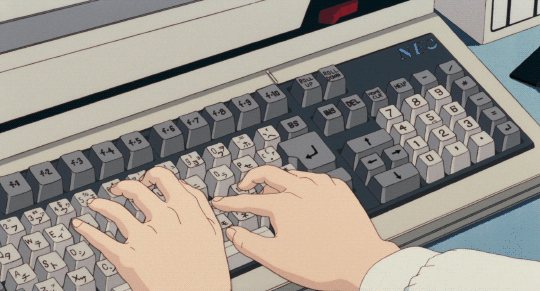
Social media platform 'Tumblr' is one of the most popular microblogging platforms used. Tumblr is ranked number 19 in social media sites in Australia. Tumblr has 3.7 million users, ahead of TikTok and reddit. I see Tumblr as a social media platform that allows people to express who they are without revealing to much about themselves., unlike other social media platforms Instagram and Facebook.
A safe space
Tumblr is not tied to the 'real name internet', providing a safe space for many marginalized groups. 'Tumblr served an important societal need by providing a safe space for trans people before, during and after transition, which was both a meaningful space for change and a supportive community' (Hamison, 2019).
Fun fact
Tumblr users don't need to follow each other to view their content, keeping their profiles hidden.
#Hashtags
Tumblr was one of the first social media platforms to use hashtags as a community building tool. Hashtags indicate topics or themes, they represent an important innovative in social media communication. The use of hashtags is powerful as it is participatory.
"The hashtag classifies messages, improves searchability and allows the organization to link messages to existing knowledge and action communities" (Saxton, 2015).
An extremely popular hashtag in the recent years is #bodypositive.
#bodypositive was developed from the body positivity movement across social media platforms, advocating acceptance for marginalized bodies and dismissal of the thin ideal. This hashtag provided exposure to such content that can be considered beneficial for a positive body image as it challenges and diversifies the concept of beauty (Cohen, 2019). This hashtag helps millions of people through identity development and can have positive effects, such as increased self-esteem and life satisfaction (Burrow & Rainone, 2017).
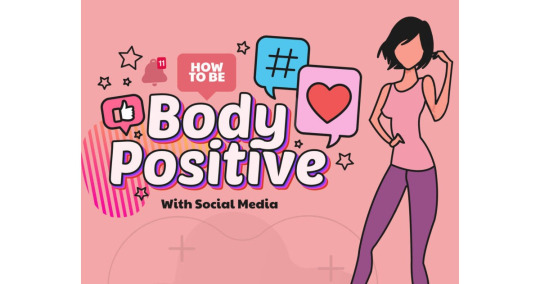
References
Chang, Y & Tang, L & Inagaki, Y 2014, ' What is Tumblr : A Statistical Overview and Consumption'. Research Gate, vol. 1, no. 16, pp. 1-10.
Choi, M & Cristol, D 2021, 'Digital citizenship with intersexuality lens: Towards participatory democracy driven digital citizenship education', Theory into Practice, pp. 1-11.
Hamison, O & Dame-Griff, A & Capello, E & Richter, Z 2021, 'Tumblr was a trans technology : the meaning importance, history and future of trans technologies', Taylor & Francis Online, vol. 21, no. 3, pp. 1-17.
2 notes
·
View notes
Text
How Tumblr’s Platform Vernacular Shapes Digital Activism and Micro-Publics
Tumblr isn’t just a relic of 2010s internet culture - It’s a living, breathing ecosystem where *platform vernacular* fuels niche communities and redefines digital activism. But how do Tumblr’s unique language and norms empower marginalized voices while navigating the paradoxes of the “public sphere”?

Micro-Publics and the Rise of Hashtag Vernacular
Habermas’s “public sphere” idealizes open, rational discourse, but Tumblr’s fragmented micro-publics - like LGBTQ+ blogs or fan communities - show how digital spaces operate differently (Simpson 2018). Here, hashtags like #BlackLivesMatter or #MeToo aren’t just metadata; they’re rallying cries that shape political discourse (Rho & Mazmanian 2020).
For instance, the #bodypositive movement on Tumblr challenges beauty norms through user-generated selfies and essays, fostering a community-driven counter-narrative to mainstream media (Reif, Miller & Taddicken 2022). These hashtags act as vernacular glue, binding users through shared slang (e.g., “OTP” or “AU”), GIFs, and reblogs - a far cry from Habermas’s text-heavy ideal.

Anonymity as a Double-Edged Sword
Tumblr’s lack of real-name policies creates safe spaces for marginalized groups, like LGBTQIA+ teens, to express themselves without fear of surveillance (Cavalcante 2018). Yet, this anonymity coexists with algorithmic biases. While Tumblr’s reverse-chronological feed *seems* democratic, studies show platforms like Twitter skew political discourse leftward, raising questions about whose voices get amplified (Huszár et al. 2021).

Platform Vernacular in Action: Memes and Fandom
Tumblr’s vernacular thrives on remix culture. Take TJLC (The Johnlock Conspiracy), a Sherlock fandom theory that spiralled into a meta-commentary on queer representation. To be more specific, the video of Sarah Z’s dissection of TJLC highlights how Tumblr’s “shitposting” and roleplay (RP) cultures blend humour with activism. Memes here aren’t just jokes - they’re resistance tools, as seen in political movements like #FreeHongKong, where absurdist humour critiques authoritarianism (Zheng & Li 2023).
youtube
Challenges: Surveillance and Algorithmic Gatekeeping
Despite its grassroots ethos, Tumblr isn’t immune to corporate or governmental surveillance. The Department of Homeland Security’s social media monitoring underscores how “safe spaces” can still be policed (Boyce 2016). Meanwhile, algorithmic curation risks homogenizing discourse - echoing Habermas’s fear of institutional influence.

Conclusion: Tumblr as a Vernacular Public Sphere?
Tumblr’s vernacular - reblogs, dashboards, and niche slang - creates a *participatory* public sphere where aesthetics and activism collide. Yet, its fragmented micro-publics remind us that the digital “public sphere” is plural, messy, and perpetually evolving. As platforms phase out hashtags, Tumblr’s survival hinges on balancing creativity with resistance to algorithmic control.
Reference:
Anselmo, DW 2018, ‘Gender and Queer Fan Labor on Tumblr’, Feminist Media Histories, vol. 4, University of California Press, no. 1, pp. 84–114.
Boyce, GA 2015, ‘The rugged border: Surveillance, policing and the dynamic materiality of the US/Mexico frontier’, Environment and Planning D Society and Space, vol. 34, SAGE Publishing, no. 2, pp. 245–262.
Cavalcante, A 2018, ‘Tumbling Into Queer Utopias and Vortexes: Experiences of LGBTQ Social Media Users on Tumblr’, Journal of Homosexuality, vol. 66, Taylor & Francis, no. 12, pp. 1715–1735.
Huszár, F, Ktena, SI, O’Brien, C, Belli, L, Schlaikjer, A & Hardt, M 2021, ‘Algorithmic amplification of politics on Twitter’, Proceedings of the National Academy of Sciences, vol. 119, no. 1.
Reif, A, Miller, I & Taddicken, M 2022, ‘“Love the Skin You‘re In”: An Analysis of Women’s Self-Presentation and User Reactions to Selfies Using the Tumblr Hashtag #bodypositive’, Mass Communication & Society, vol. 26, Taylor & Francis, no. 6, pp. 1038–1061.
Rho, EH & Mazmanian, M 2020, ‘Political Hashtags & the Lost Art of Democratic Discourse’, pp. 1–13, viewed 16 February 2025.
Simpson, E 2018, ‘Integrated & Alone’, pp. 237–240.
Zheng, Q & Li, M 2024, ‘Foreign Movies and TV Dramas as the Source of Political Argot in an Authoritarian Context: Memes and Creative Resistance in Chinese Social Media’, Critical Arts, Taylor & Francis, pp. 1–19.
#mda20009#PlatformVernacular#DigitalCommunities#HashtagActivism#PublicSphere#TumblrCulture#SocialMediaTheory#MicroPublics#DigitalCitizenship#Youtube
1 note
·
View note
Text
Week 3: Digital Community - Case study of Tumblr
Tumblr has long been a sanctuary for marginalized groups. Unlike Facebook and Instagram, which emphasize real-name identities and curated aesthetics, Tumblr thrives on anonymity and raw self-expression.

The platform’s structure fosters niche micro-publics, where users bond over shared experiences rather than social clout. This is particularly evident in the #BodyPositive movement, which flourished on Tumblr before the infamous 2018 NSFW ban altered its landscape.
Research by Reif, Miller & Taddicken (2022) highlights how the #BodyPositive hashtag created a uniquely authentic and supportive environment for self-representation. Unlike Instagram’s influencer-driven version of body positivity, Tumblr allowed users to document their unfiltered realities. This aligns with Kruse et al.’s (2018) definition of a digital public sphere: an online space where people can engage in critical discourse without institutional gatekeeping.
But while Tumblr cultivated digital empowerment, algorithms and corporate interests gradually reshaped the community. As we know, social media algorithms prioritize engagement over well-being, reinforcing echo chambers and distorting reality. Users are often fed content that aligns with their existing beliefs, limiting exposure to diverse perspectives (Cinelli et al., 2021). Consequently, this can foster echo chambers, which lead to distorted digital realities, where digital communities risk becoming insular rather than progressive and accepting of different point of views.
The 2018 NSFW ban marked a turning point. Originally positioned as a move to remove harmful content, it disproportionately impacted LGBTQ+ users, sex workers, and body-positive activists, stripping them of a space where they could express themselves without judgment. According to Kender (2022), Tumblr’s “queer and countercultural” identity was eroded, pushing many users to other platforms like Twitter (which ironically became more toxic for marginalized groups).
So, what does Tumblr’s evolution tell us about digital communities?
First, it underscores the fragility of online safe spaces—especially when they rely on corporate-owned platforms. Second, it highlights the power of hashtags in digital activism, but also the risks of algorithmic control. Lastly, it forces us to ask: can a truly independent public sphere exist online, or will all digital communities eventually be shaped by profit-driven decisions?
Conclusion:
Tumblr’s case study proves that digital communities can be empowering, but their sustainability depends on resisting institutional control and advocating for platforms that prioritize user agency over corporate interests. As digital citizens, we must critically evaluate where and how we engage—because our online spaces shape our realities.
References
Cinelli, M., Morales, G. D. F., Galeazzi, A., Quattrociocchi, W., & Starnini, M. (2021). The Echo Chamber Effect on Social Media. Proceedings of the National Academy of Sciences, 118(9), 1–8. PNAS. https://doi.org/10.1073/pnas.2023301118
Kender, K. (2022). Tumblr is Queer and Twitter is Toxic: Speculating About the Vibe of Social Media Spaces. NordiCHI ’22: Nordic Human-Computer Interaction Conference. https://doi.org/10.1145/3546155.3547279
Kruse, L. M., Norris, D. R., & Flinchum, J. R. (2018). Social Media as a Public Sphere? Politics on Social Media. The Sociological Quarterly, 59(1), 62–84. https://doi.org/10.1080/00380253.2017.1383143
Reif, A., Miller, I., & Taddicken, M. (2022). “Love the Skin You‘re In”: An Analysis of Women’s Self-Presentation and User Reactions to Selfies Using the Tumblr Hashtag #bodypositive. Mass Communication and Society, 26(6). https://doi.org/10.1080/15205436.2022.2138442
1 note
·
View note
Text
Tumblr and the Digital Public Sphere
Week 3 Digital Community: Tumblr Case Study
Introduction:
Tumblr and Its Role in the Public Sphere
Tumblr, a microblog that was launched in 2007, has long been recognized as a site of creative freedom, subcultural communities, and cultural dialogue. Unlike other social media platforms such as Facebook or Instagram, Tumblr promotes a more anonymous, user-oriented space with a wide range of content allowed, which users can engage in dialogue without the institutional policy of real names. This organizational framework closely adheres to that of the public sphere, in which users can exchange ideas openly without the interference of institutions.
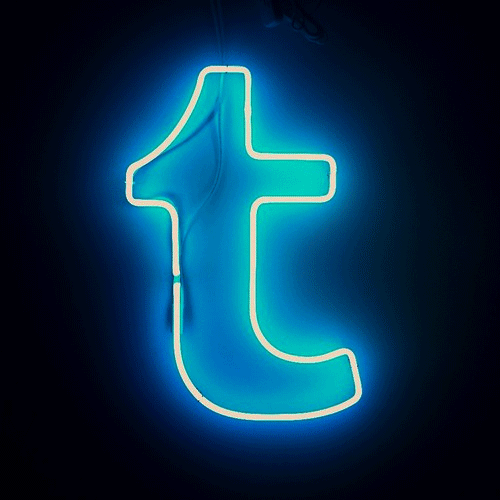
Understanding the Public Sphere and Its Digital Evolution
The public sphere, according to Jürgen Habermas 1989, is a public arena where "private people come together as a public" to engage in reasoned debate and exchange of critical knowledge, ultimately leading to political and societal change (Calhoun, 1992). The distinguishing characteristics of a public sphere include open access to information, equal opportunity to join in, and immunity from economic or political coercion.
In the digital culture of the present, the Internet, and more so social media, satisfies most of these public sphere criteria. Many writers argue that online platforms facilitate the exchange of ideas with fewer barriers to participation (Kruse et al., 2018). In theory, the decentralized nature of the Internet enables users to disseminate information and participate in discourse without institutional interference (Van Dijck, 2012). However, in reality, concerns regarding algorithmic bias, surveillance, and exclusion based on socioeconomic factors challenge the Internet’s potential as a truly open public sphere.
Why Tumblr Is a Good Digital Public Sphere?
Tumblr’s structure and affordances make it a particularly strong example of a good digital public sphere. Some highlight features that reinforce its status from other platforms include:
Anonymity: Unlike Facebook or Instagram, which require real names, Tumblr allows pseudonyms, making it a safer space for marginalized communities, such as LGBTQ+ users, to engage freely.
Hashtagging & Community Building: Tumblr was among the earliest platforms to utilize hashtags as a tool of discussion and community formation, enabling users to move through conversations without having to be stringent about content curation.
Relatively Public Nature: Users do not need to follow one another to view content, allowing for broader participation.
Less Surveillance: Unlike other websites, Tumblr does not focus on time stamps or active status indicators, reducing constant monitoring of user activity.

Nevertheless, defining it as a good public sphere does not mean it's perfect. In 2018, Tumblr decided to ban NSFW (Not Safe for Work) content. The action was controversial, with many users, especially those engaged in #bodypositive content, complaining that the policy was unjustly affecting their freedom of expression (Pilipets & Paasonen, 2020). Tumblr's automated filtering system mistakenly labelled innocent content, including fully clothed selfies and animal photos, as explicit (Jackson, 2018). The error frustrated users and lowered engagement among younger users.
Although the rationale for banning explicit content—preventing child pornography, for example—the execution of the policy demonstrated the challenges of automated moderation. Tumblr's use of censorship by AI with poor accuracy resulted in a loss of trust among its members.
References
Calhoun, C. (1992). Habermas and the Public Sphere edited by Craig Calhoun. https://calhoun.faculty.asu.edu/sites/default/files/publications/articles/habermas_and_the_public_sphere.pdf
Jackson, G. (2018, December 4). Tumblr’s New Algorithm Thinks Garfield Is Explicit Content. Kotaku. https://kotaku.com/tumblrs-new-algorithm-thinks-garfield-is-explicit-conte-1830854912
Kruse, L. M., Norris, D. R., & Flinchum, J. R. (2018). Social Media as a Public Sphere? Politics on Social Media. The Sociological Quarterly, 59(1), 62–84. https://doi.org/10.1080/00380253.2017.1383143
Pilipets, E., & Paasonen, S. (2020). Nipples, memes, and algorithmic failure: NSFW critique of Tumblr censorship. New Media & Society, 24(6), 146144482097928. https://doi.org/10.1177/1461444820979280
Van Dijck, J. (2012). Facebook as a Tool for Producing Sociality and Connectivity. Television & New Media, 13(2), 160–176. https://doi.org/10.1177/1527476411415291
1 note
·
View note
Text
[W3] Once upon a Tumblr…
Week 3: Digital Community: Tumblr Case Study
Who among the Gen Z would ever know Tumblr was such a big hit back when we were little kids? While we were still running around, tiring parents out for not finishing our meals, people had been protesting, struggling, fighting for their lives and rights. This week, the discussion raised about Tumblr's historical role in feminist activism and how the community utilises Tumblr’s now-gone features.

Social media platforms can be important spaces for feminist expression, particularly through the use of hashtags. These hashtags contribute to a larger postfeminist movement that encourages women to challenge dominant beauty standards and instead embrace self-confidence, empowerment, and a sense of limitless possibilities (Rief et al., 2022). Before 2018, Tumblr served as a valuable platform for feminist activism due to its permissive content moderation policies. This environment fostered open expression, characteristic of social media movements, and facilitated the creation of safe spaces for marginalized communities, particularly LGBTQIA+ individuals, often excluded from mainstream platforms. The platform's features, including community building and hashtag usage, enabled users to connect with like-minded individuals and exchange ideas. While this lack of moderation also exposed users to potentially harmful content, the consensus suggests that Tumblr's positive contributions to online feminism during this period outweighed the negatives. This aligns with broader trends in social media activism, including the #bodypositive movement, which promotes body acceptance, and the hashtag feminism movement, which raises awareness of feminist issues. Furthermore, the use of selfies as a tool for self-expression and empowerment, also explored in this article, demonstrates the diverse ways individuals leverage social media for feminist purposes (Keller, 2019)

But who uses Tumblr nowadays, honestly? Undeniably, Tumblr is still doing a pretty good job as a blogging platform (a perfect hideout for people with thoughts filling in their mind) and is still being used for long-form content. Guess even though not suitable for political and societal activism, Tumblr still serves it purpose for a specific niche of users. It's become a haven for creative expression, fan communities, and those seeking a less algorithmically-driven social media experience. While it may not be the powerhouse it once was, Tumblr's enduring appeal lies in its unique blend of blogging and social networking, offering a space for self-expression and community building that other platforms often lack. So, while it might not be the go-to platform for everyone, Tumblr continues to thrive, serving a dedicated and passionate user base.
References
Keller, J. (2019). “Oh, She’s a Tumblr Feminist”: Exploring the Platform Vernacular of Girls’ Social Media Feminisms. https://swinburne.instructure.com/courses/64382/files/35273973/download?wrap=1
Reif, A., Miller, I., & Taddicken, M. (2022). “Love the Skin You‘re In”: An Analysis of Women’s Self-Presentation and User Reactions to Selfies Using the Tumblr Hashtag #bodypositive. Mass Communication and Society, 26(6). https://doi.org/10.1080/15205436.2022.2138442
1 note
·
View note
Text
Welcome to Tumblr and Blogging
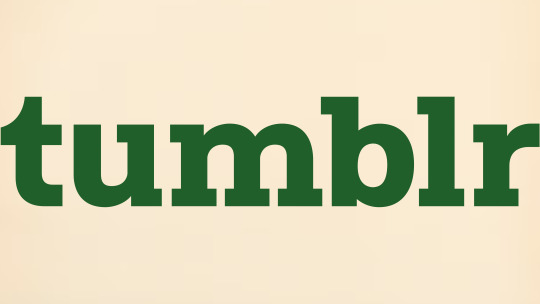
What is Tumblr? A brief introduction of Tumblr.
Tumblr is a social media microblogging site founded in 2007 by an American developer, David Karp. The site is notable for its customizability, allowing for a variety of content, including images, text, music, and short-form blog posts (Matthias, 2024). Once users follow an individual, their posts are displayed on their dashboard. On the site, fandoms (the community that surrounds a TV show, game, or book) have become main contributors (Hillman et al., 2014, p. 286).
Selfie & Selfie culture
According to Oxford English Dictionary (2023), selfie is defined as photograph that one has taken of oneself, with smartphone or webcam and shared via social media. The individuals who take selfies are most likely adolescent, and female (Reif et al., 2022). Selfie has become a genre of visual self-presentation with its own method of storytelling, representational techniques and poses (Reif et al., 2022).

Selfie culture has emerged as a natural result of the development of smartphones and social media. As technology advances, people are connected to the online space more than ever and sharing pictures of themselves online. The trend started off simply as an action of taking a photo of themselves and posting it online, but over time, it has become a method to show off and a race to have the best selfie among your friends.
Over time, selfies are no longer about the 'self,' but they are now about the engagement and the interaction you receive when posting them online. As a result, social media users will alter their body image, posting selfies more frequently to compensate for the fear of receiving less (positive) user feedback (Reif et al., 2022, p. 4).
Desire and Digital gaze
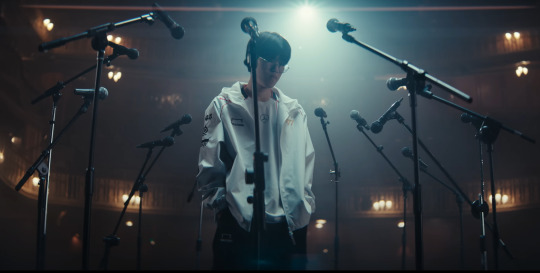
Authenticity bind is a term describing the pressure on women to share private information on social media in order to present authentic (Reif et al., 2022, p. 4). Social media often rewards certain aesthetic or provocative images with positive reactions. Over time, the desire for validation can encourage users to push boundaries and share increasingly explicit content. Tumblr, as a social platform, is tolerating NSFW (not safe for work) content and allowing it to exist in a sense of a community (Ashley, 2019, p.359). Although I have to give credit to Tumblr for its transparency and inclusion for marginalized groups. It still raises the question of 'Where to draw the lines between art, self-expression, and self-objectification?'.
References
Ashley, V. (2019). Tumblr porn eulogy. Porn Studies, 1–4. https://doi.org/10.1080/23268743.2019.1631560
Hillman, S., Procyk, J., & Neustaedter, C. (2014). Tumblr fandoms, community & culture. Proceedings of the Companion Publication of the 17th ACM Conference on Computer Supported Cooperative Work & Social Computing - CSCW Companion ’14. https://doi.org/10.1145/2556420.2557634
Matthias, M. (2024, August 31). Tumblr social media microblogging site. Www.britannica.com. https://www.britannica.com/topic/Tumblr
Oxford English Dictionary. (2023). “Selfie, n”. Oxford University Press.. OED Online. https://doi.org/10.1093//OED//1054456437
Reif, A., Miller, I., & Taddicken, M. (2022). “Love the Skin You‘re In”: An Analysis of Women’s Self-Presentation and User Reactions to Selfies Using the Tumblr Hashtag #bodypositive. Mass Communication and Society, 26(6). https://doi.org/10.1080/15205436.2022.2138442
0 notes